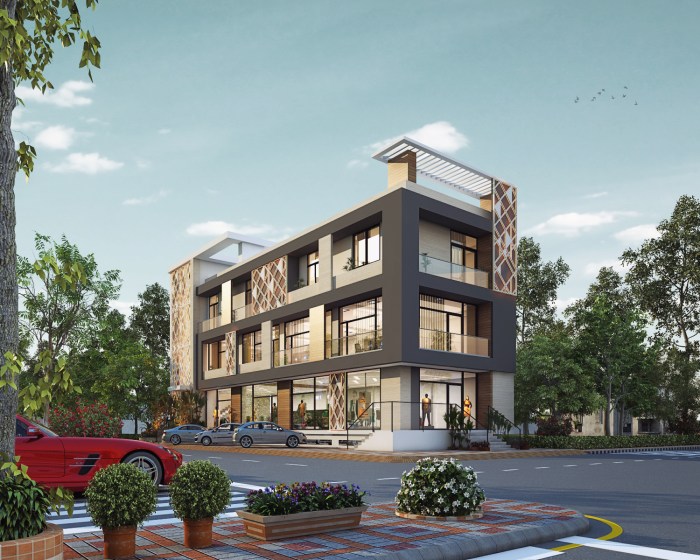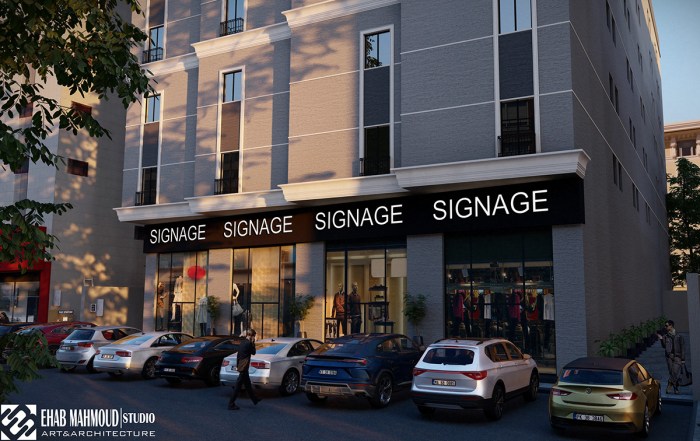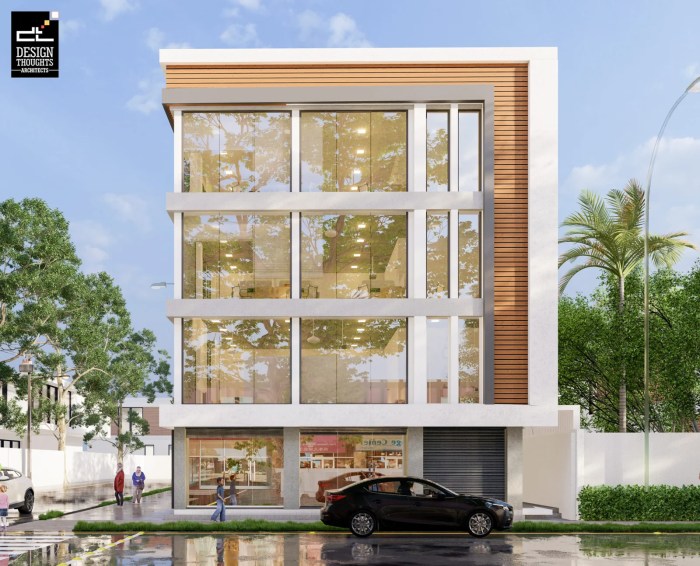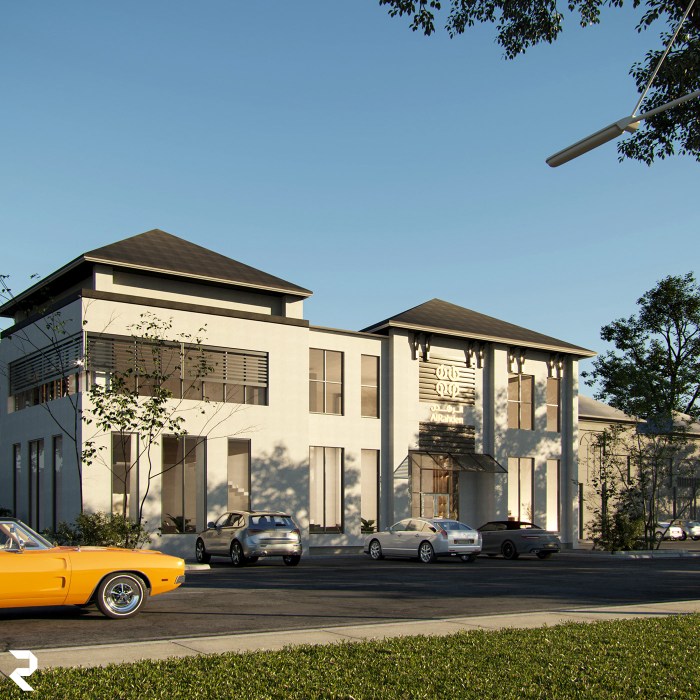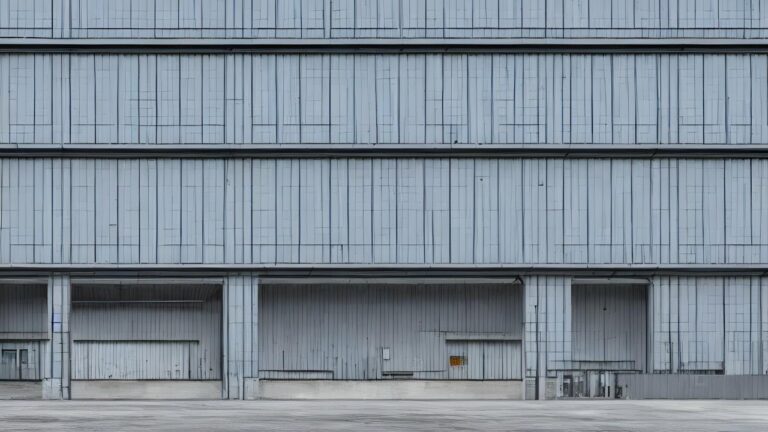Kinetic Facades Dynamic Architecture
Kinetic facades represent a revolutionary approach to building design, transforming static structures into dynamic entities. These facades, through intricate mechanisms and carefully selected materials, move and respond to environmental stimuli, creating captivating visual displays and potentially enhancing building performance. From the subtle shift of panels to the dramatic unfolding of entire structures, kinetic facades offer a unique aesthetic experience and challenge traditional notions of architectural permanence.
This exploration delves into the core concepts of kinetic facades, examining their design principles, implementation strategies, and potential applications. We’ll explore the various types of kinetic facade systems, their strengths and weaknesses, and the technological advancements driving their evolution. Understanding the advantages and disadvantages, alongside the intricate design processes, is crucial to fully grasp the potential of this innovative architectural trend.
Defining Kinetic Facades
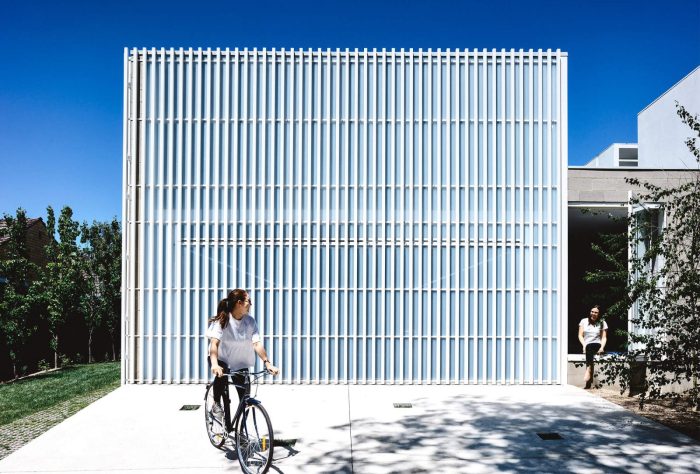
Source: com.au
Kinetic facades are dynamic architectural elements that incorporate moving parts into the building’s exterior. These systems, often employing intricate mechanisms, transform the visual and functional character of a structure, reacting to environmental stimuli or user interaction. Their distinctive feature lies in their ability to alter the building’s appearance, providing a unique aesthetic and potentially enhancing its performance.
Kinetic Facade Types
Kinetic facades manifest in diverse forms, each with unique movement mechanisms. Understanding these mechanisms is crucial to appreciating the versatility and potential of this architectural approach. Categorizing these systems by their movement principles allows for a more structured understanding of their functionality and application.
- Actuator-Driven Systems: These facades employ various actuators, such as electric motors or hydraulics, to drive the movement of components. This approach offers precise control over the movement and allows for complex and sophisticated animation sequences. Examples include facades that respond to sunlight, weather patterns, or even user input, adjusting the building’s exterior to optimize energy efficiency or create a dynamic aesthetic.
- Solar-Driven Systems: These facades incorporate solar energy to power the movement of components. They directly harness the sun’s energy to generate the necessary force for kinetic motion. This approach aligns with sustainability goals, minimizing reliance on conventional energy sources while showcasing the responsiveness of architecture to environmental stimuli. For instance, panels might rotate to optimize solar gain or shade a building.
- Wind-Responsive Systems: Some kinetic facades react to wind forces. These systems utilize wind-driven mechanisms to adjust the facade’s elements, often in ways that enhance structural stability or manage air flow. Such systems are particularly useful in high-wind areas, optimizing the building’s response to natural phenomena and offering a remarkable example of dynamic architecture.
Materials Used in Kinetic Facades
The choice of materials for kinetic facades is critical, considering their strength, durability, and suitability for dynamic motion. The materials must withstand the stresses and strains associated with continuous movement.
- Metals: Metals like aluminum, stainless steel, and copper are frequently used due to their strength, durability, and ability to withstand the stresses associated with moving parts. Their aesthetic appeal and resistance to corrosion further enhance their suitability.
- Glass: Tempered glass, a strong and robust material, is frequently incorporated into kinetic facades. Its transparency allows natural light to penetrate while maintaining structural integrity. Its ability to offer visual interest while facilitating the movement of other components is a major consideration.
- Composite Materials: Advanced composite materials, combining the strengths of different substances, are increasingly used. These offer a balance of strength, lightness, and cost-effectiveness, making them a promising material for large-scale kinetic facade projects.
Advantages and Disadvantages of Kinetic Facades
The implementation of kinetic facades presents a complex interplay of benefits and drawbacks. A comprehensive understanding of these factors is essential for informed decision-making.
| Facade Type | Advantages | Disadvantages |
|---|---|---|
| Actuator-Driven | Precise control, complex movements, and high customization | High initial cost, potential maintenance issues, dependence on electricity |
| Solar-Driven | Sustainability, reduced energy consumption, and environmentally friendly | Dependence on sunlight availability, limited movement range, and initial investment |
| Wind-Responsive | Adaptive to wind forces, improved structural stability, enhanced energy efficiency | Complexity in design and construction, potential damage from extreme winds, and maintenance difficulties |
Design and Implementation: Kinetic Facades
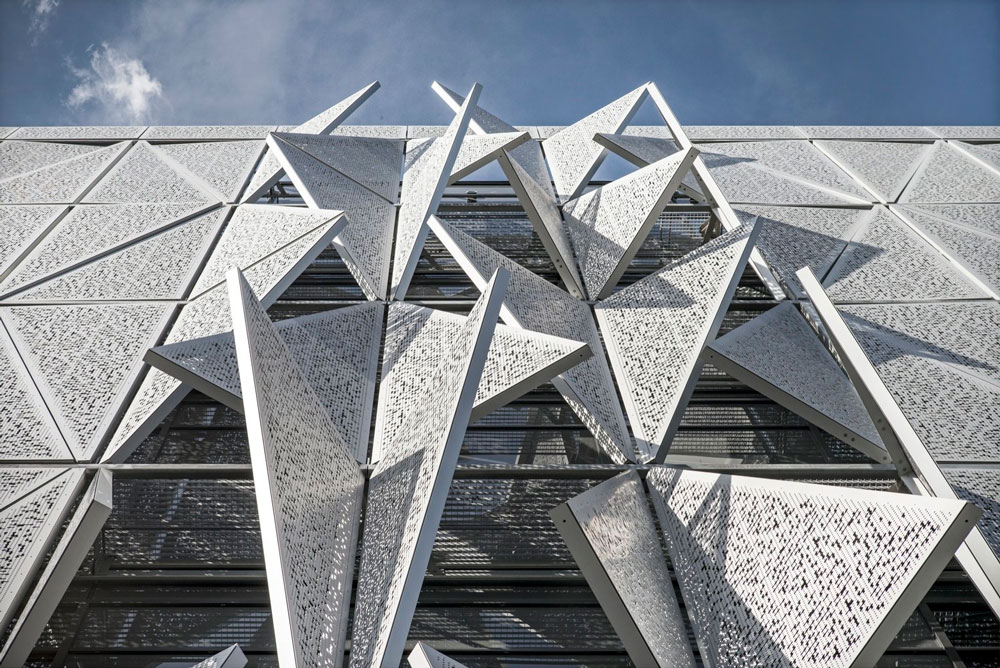
Kinetic facades represent a fascinating intersection of architecture and engineering, pushing the boundaries of building aesthetics and functionality. Their dynamic nature allows for a unique expression of architectural intent, enhancing the visual appeal and potentially even the performance of a structure. Careful consideration must be given to both the design process and the technical implementation to achieve a successful and enduring kinetic facade.
The design process for kinetic facades is multifaceted, requiring collaboration between architects, engineers, and specialists in various fields. A comprehensive understanding of the building’s intended use, the local environment, and the desired aesthetic effect is crucial.
Design Process Stages
The design process for kinetic facades typically involves several key stages:
- Conceptualization and Design Exploration: Initial sketches and conceptual models are developed to explore the movement patterns, material choices, and overall aesthetic of the facade. This stage emphasizes the interplay between visual appeal and technical feasibility.
- Detailed Design and Engineering: Detailed drawings and calculations are produced, including structural analysis, material selection, and the design of the mechanical and electrical systems. The feasibility of the design in terms of load-bearing capacity, material properties, and environmental conditions is assessed.
- Prototype Development and Testing: Prototypes are often built to test the functionality and performance of the kinetic elements under various conditions. This phase allows for adjustments and improvements before the full-scale implementation.
- Final Design and Specification: The final design is finalized with precise specifications for materials, components, and the integration of the kinetic system into the building’s structure.
Integration Considerations
Integrating kinetic facades into existing or new buildings requires careful planning and coordination. Compatibility with the existing structure, including load-bearing capacity and structural integrity, is paramount. Careful attention to the building’s overall design language and the integration of the kinetic elements with the surrounding environment is critical.
- Existing Structures: Assessing the compatibility of the kinetic facade with the existing structure, considering load distribution and potential structural modifications, is essential.
- New Buildings: Integrating the kinetic facade into the building’s design from the initial planning stages ensures seamless integration with the overall architectural concept.
- Environmental Factors: Considerations such as wind loads, seismic activity, and temperature fluctuations are critical for the design and implementation of robust and enduring kinetic facades.
Technical Challenges and Solutions
Implementing kinetic facades presents several technical challenges, including:
- Complexity of Movement Mechanisms: Designing and manufacturing the intricate mechanisms that drive the movement of the facade components requires sophisticated engineering and specialized expertise.
- Energy Efficiency: The energy consumption of the mechanisms must be considered to ensure sustainability and cost-effectiveness. Solutions may involve incorporating renewable energy sources or optimizing the design of the drive system.
- Maintenance and Repair: The intricate nature of the components necessitates a robust maintenance plan and easily accessible repair points to minimize downtime and ensure longevity.
Successful Project Examples
Several successful kinetic facade projects showcase the potential of this technology. Examples include:
- The “Breathing Tower” in Rotterdam: This project demonstrates the potential for dynamic facades to respond to environmental conditions, adjusting their appearance in response to wind speed and direction.
- The “Dancing Facade” in Berlin: This example showcases the expressive potential of kinetic facades, creating a mesmerizing display of motion that complements the building’s architectural design.
Movement Patterns and Applications
The following table illustrates various movement patterns and their potential applications in diverse architectural settings:
| Movement Pattern | Potential Application |
|---|---|
| Linear | Residential buildings, commercial spaces require simple yet dynamic movement. |
| Curvilinear | Architectural structures seek to showcase a flowing, organic aesthetic. |
| Rotational | Buildings seeking a dramatic, visually engaging facade, such as observatories or art installations. |
| Oscillatory | Buildings are looking for a rhythmic, pulsing effect, often in public spaces or buildings with a strong focus on the visual element. |
Applications and Future Trends

Kinetic facades offer a compelling blend of aesthetics and functionality, transcending the limitations of traditional static designs. Their dynamic nature allows for a multitude of applications, from enhancing the energy efficiency of buildings to creating captivating visual displays. This section delves into the diverse potential uses of kinetic facades across various architectural contexts, alongside exploring emerging technologies and their impact on building sustainability.
Potential Applications in Different Architectural Contexts
Kinetic facades are not confined to a single architectural style or function. Their adaptable nature allows for integration into a broad spectrum of projects, from commercial high-rises to residential homes and public spaces. Commercial buildings, for instance, can leverage kinetic facades to showcase brand identity and create visually engaging environments for customers. Residential applications can incorporate kinetic elements to provide privacy, natural light regulation, and unique aesthetic features. Public structures can utilize kinetic facades to communicate information, engage the community, and generate a sense of wonder. The inherent flexibility of these facades allows them to be tailored to meet the specific needs and aspirations of each project.
Role in Enhancing Building Sustainability and Energy Efficiency
Kinetic facades play a significant role in improving building sustainability and energy efficiency. Their dynamic nature allows for adaptive control of daylighting and shading, reducing the reliance on mechanical cooling and heating systems. By strategically manipulating the facade’s shape and orientation, natural ventilation and energy harvesting can be optimized. For example, buildings in hot climates can use kinetic facades to dynamically adjust shading, minimizing solar heat gain during peak hours. Conversely, in cold climates, facades can be designed to maximize solar gain during winter months. This adaptive approach leads to substantial reductions in energy consumption and operational costs, aligning with sustainable design principles.
Future Trends in Kinetic Facade Technologies
Advancements in materials and control systems are driving the evolution of kinetic facades. Lightweight, high-strength materials, like advanced composites and smart polymers, are enabling more complex and intricate designs. These materials can also be designed to incorporate integrated sensors and actuators, enhancing the responsiveness and adaptability of the facades. Furthermore, advancements in smart control systems are leading to more sophisticated and automated facade movements, optimizing performance based on real-time environmental data. The integration of artificial intelligence (AI) and machine learning (ML) algorithms promises to further refine control strategies, leading to even more efficient and responsive facade systems.
Comparison of Aesthetic and Functional Aspects
Kinetic facades present a compelling contrast to traditional static facades. While static facades offer a stable and predictable aesthetic, their functionality is often limited to a fixed orientation and shading. Kinetic facades, in contrast, offer a dynamic and adaptable aesthetic, providing a unique and engaging visual experience. Functionally, kinetic facades excel in their ability to respond to environmental changes, optimizing natural light, ventilation, and energy efficiency. This responsiveness leads to a significant reduction in energy consumption compared to static counterparts.
Factors Influencing the Choice Between Kinetic and Static Facades
| Factor | Kinetic Facade | Static Facade |
|---|---|---|
| Aesthetic Appeal | Dynamic, adaptable, engaging visual experience | Stable, predictable, traditional aesthetic |
| Energy Efficiency | Potentially higher energy savings through adaptive control | Lower energy savings, fixed shading |
| Cost | Generally higher initial cost due to complexity | Lower initial cost due to simplicity |
| Maintenance | Potential for increased maintenance due to moving parts | Lower maintenance requirements |
| Project Requirements | Suited for projects requiring dynamic response and sustainability | Suited for projects prioritizing simplicity and cost-effectiveness |
| Environmental Conditions | Ideal for locations with extreme temperature fluctuations or varying light conditions | Suitable for consistent environmental conditions |
Outcome Summary
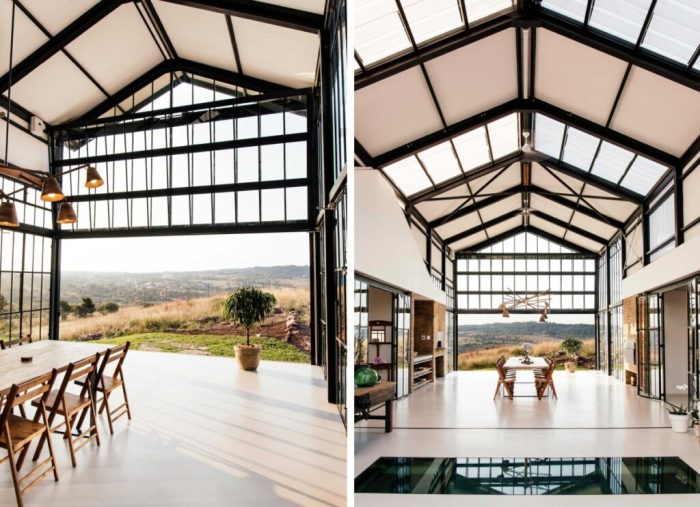
Source: homedit.com
In conclusion, kinetic facades offer a compelling blend of aesthetics and functionality. While the implementation presents challenges, the potential benefits for both architectural expression and building performance are significant. From enhancing sustainability to creating awe-inspiring visual experiences, kinetic facades are poised to redefine the future of building design. The future trends and applications of these dynamic facades suggest a promising direction for architectural innovation, pushing the boundaries of what’s possible in the built environment.
